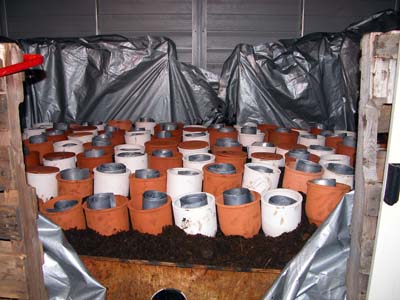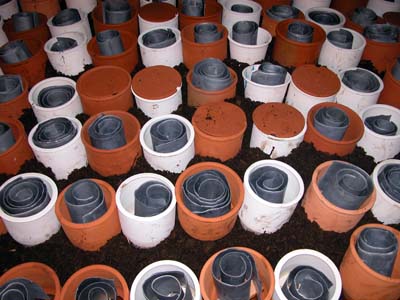In the next step of the lead white making process, specially made earthenware pots were arranged and then filled about one-third with vinegar. You will notice a variety of pot colors which indicate varying amounts of lead inserted into certain pots which were processed differently. The rolled lead coils were then placed into the pots. Some pots had covers as part of the attempt to understand the corrosion process described in old literature.

placed on bed of manure and bark.
Fresh horse manure collected from a local stable was mixed with bark and placed in layers inside the shed. The corroding pots were transferred from the staging area to the shed and embedded in the horse manure.
Nearly half a ton of lead in pots was deposited over the three-foot high bed of horse manure. It takes about 12 weeks for the lead to completely corrode and form white lead.
Wireless sensors were placed in the stack shed to monitor the temperature and moisture. Information was recorded daily during the progress of the stack and photographs were taken at weekly intervals.
You can understand, now, my thoughts on the complexity of this process. Though I did consider trying to do this at one time, it was a brief thought….thank goodness. My hat is off to George and his assistants for stepping up.
All images and detailed information courtesy George O’Hanlon, Natural Pigments


Some processes are definitely left up to others!
That is an understatement Cindy. I can’t imagine how much work it would be to make the stack white. I will definitely leave that to others. Margret